Home » Best Things to Do in Malta
If you’re planning to visit the Maltese islands, there are more than enough fun things to do in Malta – from sightseeing to tourist attractions and more adventurous activities.
Here’s a comprehensive list of my best Malta travel tips to help you decide what to do in Malta!
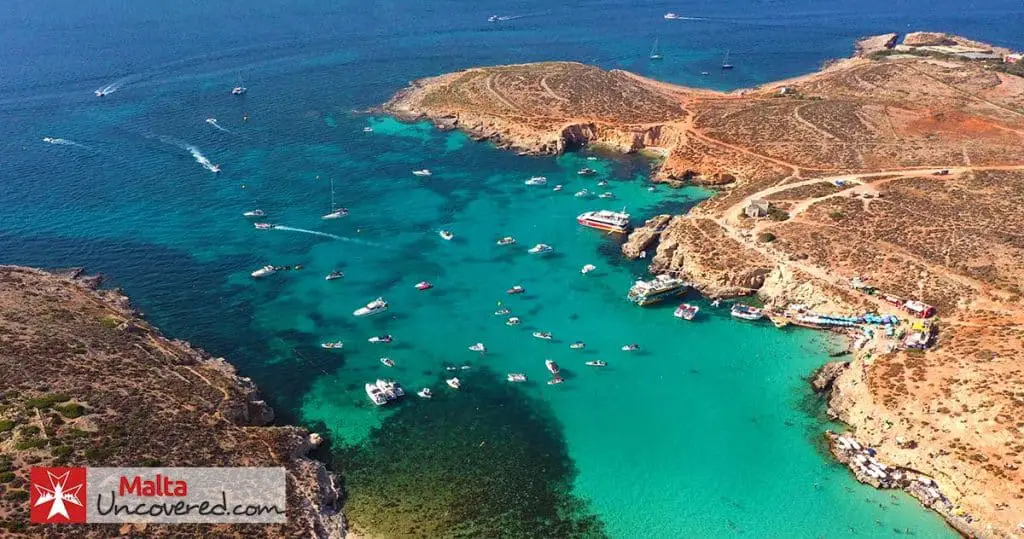
Malta’s most must-visit destination is on the tiny island Comino: Blue Lagoon Bay. Just northeast of the Maltese coast, this gem of a lagoon boasts the most sparkling azure-blue water, which will invite anyone into the water.
Head here for a lazy day of tanning, swimming and cocktails – and bring a snorkel set just in case; the marine life is exciting. The easiest way of getting there is by taking a boat trip, or tour. If you can afford it, a private boat tour is by far the best choice.
The best regular boat tour to the Blue Lagoon is one of Sea Adventure Malta, where you’ll head to the lagoon on one of their three boat options:
I recommend taking a boat tour rather than organising everything yourself and taking the ferry, as it will save you hassle and also because it can be hard to find a spot to relax on the tiny beach near the Blue Lagoon.
If you’d rather have more flexibility, I recommend taking the iSeeMalta Coastal route. This hop-on-hop-off ferry works the same way as the buses, which allows you to hop on at different stops and hop off wherever you want.
For just an attractive price, you can get a day pass, with which you can head to the Blue Lagoon and back to your accommodation, wherever that is.
The Blue Grotto is one of the most unique things to do in Malta. This is a must-visit, especially on sunny summer days when the Mediterranean seawater sparkles around the impressive rock cave formation in the south of Malta.
You’re taken inside the Blue Grotto with a short boat tour to admire the sunlight bouncing off the sandy sea floor onto the rocks above. Truly magical!
Combine it with a visit to Malta’s traditional fishing village, Marsaxlokk and its big market in this Blue Grotto and Marsaxlokk tour to make the most of your day.

The absolutely stunning and fortified capital of Malta, Valletta, is a peninsula surrounded by the Mediterranean Sea – and the Grand Harbour. From Marsamxett Harbour in the west to the Three Cities and their harbours on the east side, all the surrounding areas have played a significant role in protecting the capital throughout the centuries.
You can cruise through Grand Harbour and Marsamxett Harbour for just €20 with the iSeeMalta Grand Harbour cruise.
You’ll get the opportunity to imagine the rich history of the area as you visit the natural harbours on both sides of Valletta. This 90-minute hop-on-hop-off tour allows you to get on board wherever you are, as well as make several stops on the way. Flexible and enjoyable!
Check out my two guidebooks full of local knowledge and my best recommendations for your trip, and up-to-date for 2024!
Malta & Gozo guide book
Valletta: An Insider’s Guide to Malta’s Capital
Take the hassle out of planning your trip to Malta and be an informed traveller!
You can’t visit Malta without visiting its intriguing and gorgeous capital, Valletta. The city holds a centuries-long history and is filled with historical sites. It definitely needs to be on your list of things to do in Malta! Read more about Malta’s capital further down.

Within Valletta, you’ll find the iconic Saint John’s Co-Cathedral. The Roman-Catholic co-cathedral dates back to 1577, and its interior is considered to be one of Europe’s finest examples of high Baroque architecture. Learn more about the cathedral in the Valletta section of this article.
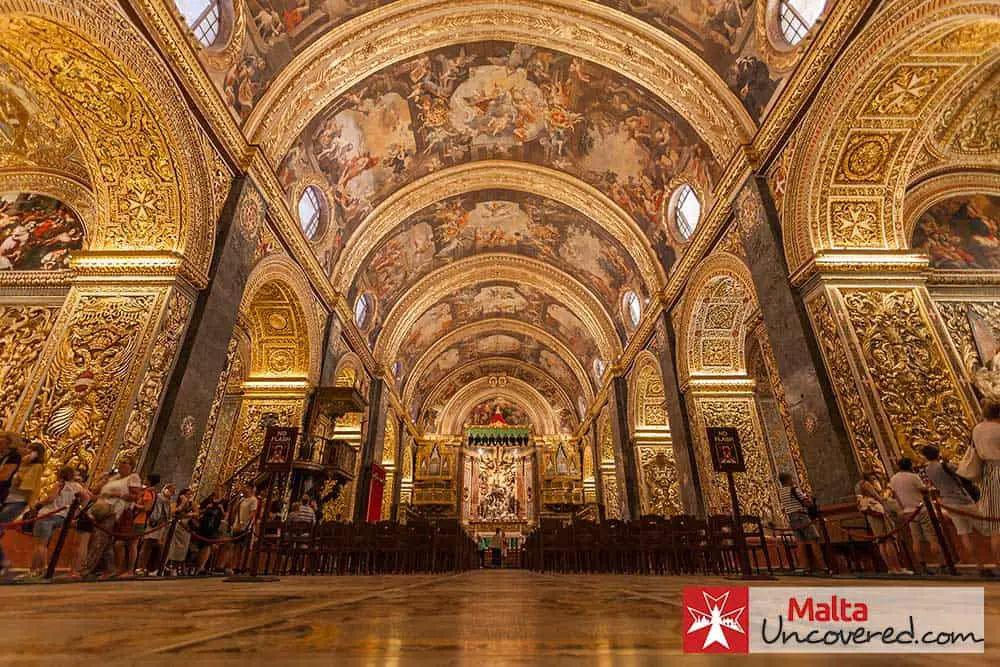
If you are interested in Malta’s history or want to visit its second-most impressive city, the ancient city of Mdina is bound to impress. The fortified city used to be Malta’s capital, and within its walls hides some of the most admirable art and architecture. Learn more about Mdina in the section below.

Prefer nature over city life? Then, the smaller Island of Gozo is an absolute must. Malta’s sister island is a natural gem, with bountiful greenery and plenty of beaches to explore.
A lot quieter than the bustling island of Malta, the idyllic island will capture your heart if you love peace and serenity. Further down below, you can find more details about Gozo and how to get there.
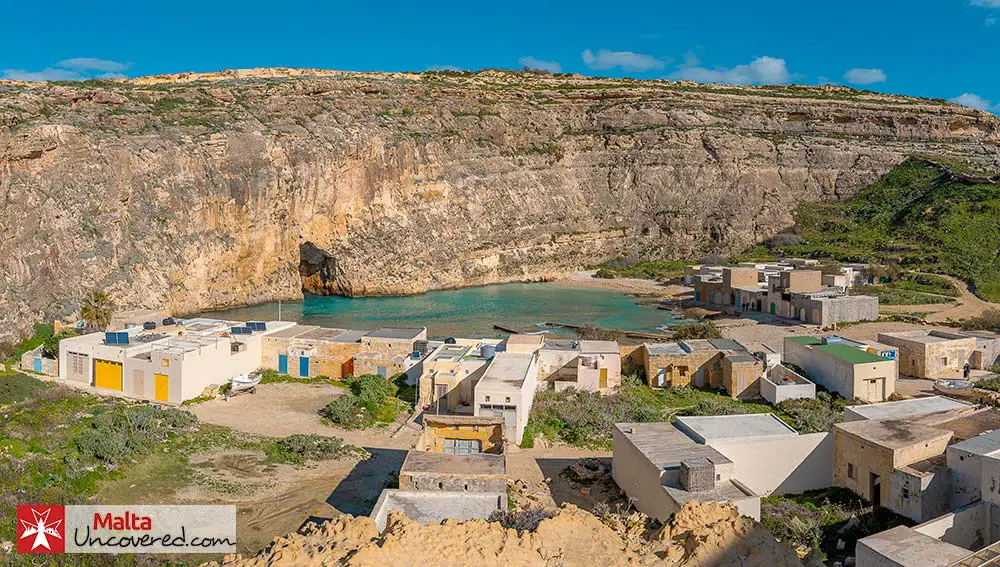
Malta is famous for its prehistoric buildings and remains, and one of the most impressive ones is the Ħal Saflieni Hypogeum. This underground burial site dates back to 4000 BC and was only discovered in 1902. Read on to find out more!

Valletta is a true gem of a place and an absolute must-visit. It’s one of my favourite places in Malta, and I always discover something new whenever I go there.
These are a few of the top places to visit and things to do while you’re there.
The jewel of Valletta is the St. John’s Co-Cathedral. A modestly designed exterior hides what’s inside: A jaw-dropping display of art, Baroque design, marble floors with large tombstones and several niches and chapels. To boot, its museum displays works by the world-famous late-Renaissance painter Caravaggio.
 La Sacra Infermeria, the Holy Infirmary of the Knights of St. John, is over 400 years old and has served many generations of patients. The hospital maintained high standards for its time and is one of the most impressive historical attractions in Malta.
La Sacra Infermeria, the Holy Infirmary of the Knights of St. John, is over 400 years old and has served many generations of patients. The hospital maintained high standards for its time and is one of the most impressive historical attractions in Malta.
La Sacra Infermeria’s Great Ward was once Europe’s longest at 155 metres long. The entire Infirmary accommodated a total of 563 beds in 1787.
When visiting La Sacra Infermeria, don’t miss out on the Augmented Reality (AR) experience named ‘Reliving The Sacra Infermeria’. Interact with the history and its protagonists while being transported back in time with this innovative concept – a fun and educational experience for everyone.
There is also the Malta Experience, an audio-visual showing narrating the intriguing 7000-year history of Malta.
In just 45 minutes, you’ll grasp the country’s unique history, which will enrich your entire understanding of the islands, its people, and the places you’ll visit.
The Upper Barrakka Gardens are a real serene treat in Valletta, hidden away in a corner of the city and offering a break from the bustling capital.
Take a stroll past the fountain and flowers, enjoy the amazing views of the Grand Harbour and grab a coffee while you enjoy some shade. You can also visit the Lascaris War Rooms while you’re here. It doesn’t get better than this!
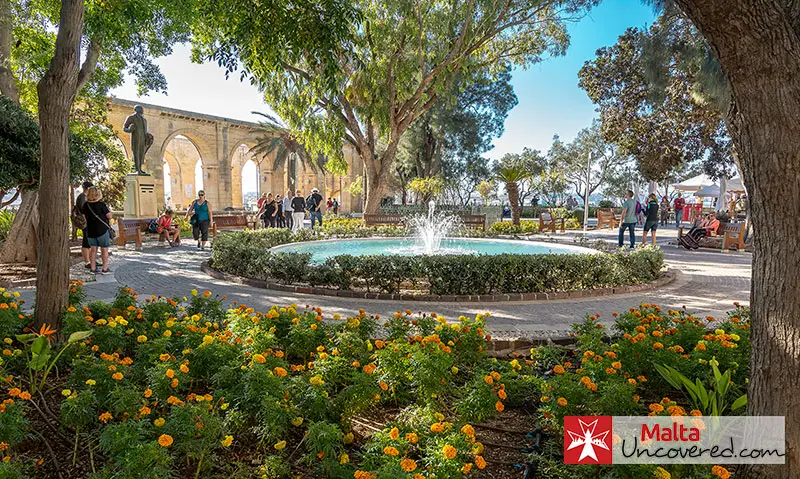
 Grand Master’s Palace
Grand Master’s PalaceRight in the centre of Valletta, you’ll find the Grand Master’s Palace in all its majesty. The palace was built between the 16th and 18th centuries as the palace of the Grand Master of the Order of St. John, who ruled Malta.
Inside the Grand Master’s palace, you’ll find stunning artworks, heritage items, and old Maltese furniture. You can also visit the Palace State Rooms, located inside Grandmaster’s Palace, which is a very impressive attraction to admire as well.
Finish your visit with the Palace Armoury, which houses a huge collection of armour and artillery that belonged to the Knights of the Order of St. John and the Ottomans.
 Lascaris War Rooms
Lascaris War RoomsLocated under the Upper Barrakka Gardens, the Lascaris War Rooms are known as Malta’s best-kept secret.
The underground complex of tunnels and chambers housed the War Headquarters, which was used to coordinate the island’s defence during the Second World War. After that, the Lascaris War Rooms were used by NATO, and today, you can visit them as a museum.
One of Valletta’s oldest churches is the Church of St. Paul’s Shipwreck, dating back all the way to the 1570s.
The story of the apostle St. Paul is described in the New Testament, and it is believed that his shipwreck on the island brought Christianity to Malta. Today, St. Paul is considered Malta’s spiritual father.
Check out the National War Museum as you explore Fort St. Elmo. With a superb collection of artefacts dating back to prehistoric times, this national museum provides a detailed overview of Malta’s important role in several wars, especially the Second World War.
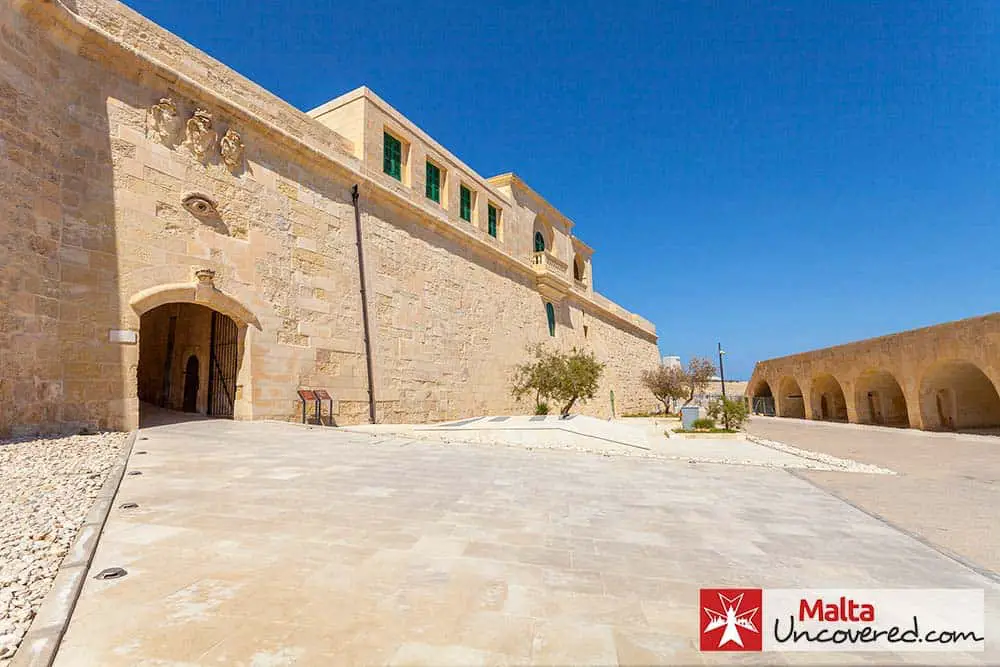
This unique attraction in the heart of Valletta is an impressive 16th-century palace of a Maltese noble family, and it’s clear from the second you step inside.
Casa Rocca Piccola is still privately owned by a noble Maltese family and lovingly taken care of, and the owners will happily show you around their beloved home.

MUŻA is an art museum located at Auberge d’Italie in Valletta, Malta, displaying works by Maltese and foreign artists representing the major European artistic styles
Formerly known as the National Museum of Fine Arts, it was located at Admiralty House between 1974 and 2016.
Today, it’s the perfect place to visit if you are into art and want to discover some of Malta’s iconic artists and want to learn about Malta’s history through the arts.
You can tour Valletta in different ways, either by yourself with my Valletta travel guidebook (highly recommended, of course!) or with one of these well-reviewed walking tours:
More info on sightseeing in Valletta here: Top 20 Things to Do and Places of Interest in Valletta
If you have a day or two, I absolutely recommend visiting Gozo Island. The more natural and serene sister island to Malta offers peace and quiet and just as much history as the island of Malta itself. It’s definitely one of my favourite things to do in Malta!
You can take the main ferry to Gozo from the north of Malta, in Ċirkewwa. Depending on where you are staying, it can take quite a while to get there – around an hour and a half from Valletta by local bus.
However, the ferry trip to take you across to Mġarr Harbour in Gozo just takes 20 minutes, and a return ticket is €4.65. Ferries go to and from Gozo almost 24/7, about twice per hour.
Another faster option (if you are located centrally) is the fast ferry from Valletta, which also arrives at Mġarr Harbour. The ferry is operated by Gozo Highspeed, charging €7.50 for a one-way ticket. The trip from Valletta to Gozo takes just under 45 minutes.
Just be aware that the vessels, although fast, aren’t recommended for people who get seasick easily!

 Although you can explore Gozo by yourself in various ways, taking an organised day trip is by far the most convenient option.
Although you can explore Gozo by yourself in various ways, taking an organised day trip is by far the most convenient option.
While public transport exists in the form of buses, the network isn’t known for its efficiency, and a rental car is almost always the better alternative if you’re set on discovering Gozo without help.
These are a few of the best options for day trips in Gozo:
Get the best travel tips from Malta Uncovered delivered to you in bite-sized chunks by email. (Unsubscribe at any time!)
 Wander around Victoria’s old town
Wander around Victoria’s old townGozo’s capital, Victoria, is a small but lovely town with an authentic atmosphere.
Wander around to explore the little alleys, many churches and cosy squares, and make your way to a local coffee shop for a quick break or Maltese pastizzi (puff pastry).
You’ll also find amazing hand-made and original souvenirs in the stores around town.
In Victoria lies the majestic and ancient Cittadella, Gozo’s fortified city. This is a must-see, as it dates back to circa 1500 BC and is still home to many interesting sites and museums.
Take a nice walk around the city’s walls to see Gozo’s most amazing views, and check out the Old Prison to get an idea of what the Middle Ages in the capital were like.

Few spots around Gozo provide as much natural beauty as Dwejra and its surroundings.
From the Inland Sea (a small bathing area surrounded by tall cliffs connected to the open sea) to Fungus Rock (once known for a rare species of fungi) and Dwejra Bay itself, peace and nature are one here.
It’s one of my favourite spots around the Maltese islands.
Fancy a visit to Gozo? Get more ideas here: 25+ Things to Do in Gozo.
If you want to see most of Malta and Gozo but are short on time or simply enjoy being driven around with the flexibility to get off anywhere, check out the hop-on-hop-off buses and ferries by iSeeMalta.
The buses and ferries take specific routes, hitting almost all of the islands’ highlights, and you can decide where you want to stop and have a better look around.
Very convenient if you want your transport sorted and know where you want to go.

Valletta is a historical city, but Mdina beats Malta’s current capital in terms of age and should definitely be in your list of things to do in Malta.
The island’s former capital, also known as the Silent City, dates back all the way to the 8th century BC when Phoenician settlers inhabited the town, which was then known as “Maleth”.
But even if you’re not a history geek, Mdina is an incredible city that you can’t miss out on. Sitting on top of one of the tallest hills on the island of Malta, Mdina is a small town surrounded by tall bastions and a large moat (which is nowadays a garden).
Although it’s a popular option among things to do in Malta, it rarely feels busy in its narrow streets and alleys, and there really is nothing like it. It’s as if you’re taking a step back in time – that’s how well-preserved the place is.
Once there, I also highly recommend paying a visit to the town of Rabat, which you can find on the doorstep of Mdina.
Because Mdina has many stories to tell, getting a tour is a good idea. These are a few of the options:
 The wide-open views of Malta from the bastions on the northernmost part of Mdina are stunning and you can take a quick break in the shade under the tall trees there too. TIP: Fior di Latte (small ice cream parlour) is a delicious way of cooling down during the hot summer months!
The wide-open views of Malta from the bastions on the northernmost part of Mdina are stunning and you can take a quick break in the shade under the tall trees there too. TIP: Fior di Latte (small ice cream parlour) is a delicious way of cooling down during the hot summer months! There is little more authentic than Malta’s Three Cities: Vittoriosa, Senglea, and Cospicua. The historic fortified cities sit next to each other, across the Grand Harbour from Valletta.
There is little more authentic than Malta’s Three Cities: Vittoriosa, Senglea, and Cospicua. The historic fortified cities sit next to each other, across the Grand Harbour from Valletta.
Walking around, you will take in the century-old architecture and hear the locals share daily gossip from their balconies over a te fit-tazza – a traditional Maltese cup of tea.
You’ll get the most out of the Three Cities by simply wandering around, having a taste of traditional Maltese food in one of the many restaurants, and taking in the views (and sun!) at the Grand Harbour.
Prefer a guided tour? I highly recommend this half-day tour (4 hours) which includes a harbour cruise by boat.
While you’re in the Three Cities, you can opt to visit these museums in Vittoriosa:

When the Knights of the Order of St. John arrived in Malta, it wasn’t Valletta or even Mdina, which was their seat of power. It was Vittoriosa.
At the end of the peninsula of Vittoriosa, you can find the beautifully restored Fort St. Angelo, which was the home of the Knights and which played an important part in their victory during the Great Siege of Malta.
Apart from the impressive building and its fortifications, the museum inside its walls tells the story well.
It’s not just a destination for history buffs, families with kids also enjoy a visit to explore Fort St. Angelo.
Surrounded by the sea, it’s no wonder that Malta has a rich naval history.
Covering over 7000 years, the Maritime Museum presents over 20,000 artefacts that represent traces of occupancy, conflict and change throughout the centuries.
Malta’s history is long and intriguing, so much even that three sites have been inscribed on the UNESCO World Heritage List, while another seven are on the Tentative List.

First on the Inscribed list is Malta’s capital, Valletta, which is no surprise because the city is basically a historical open-air museum.
Built in the 16th century by the Knights of Malta, it’s one of the smallest capital cities in Europe, largely surrounded by impressive fortifications.
Despite intense bombing during the Second World War, a large number of centuries-old buildings have survived, and there’s something to admire at almost every corner.
Valletta is a destination in itself, and you can easily spend three days sightseeing there. A number of popular things to do in Malta can be found here, so you won’t get bored here.
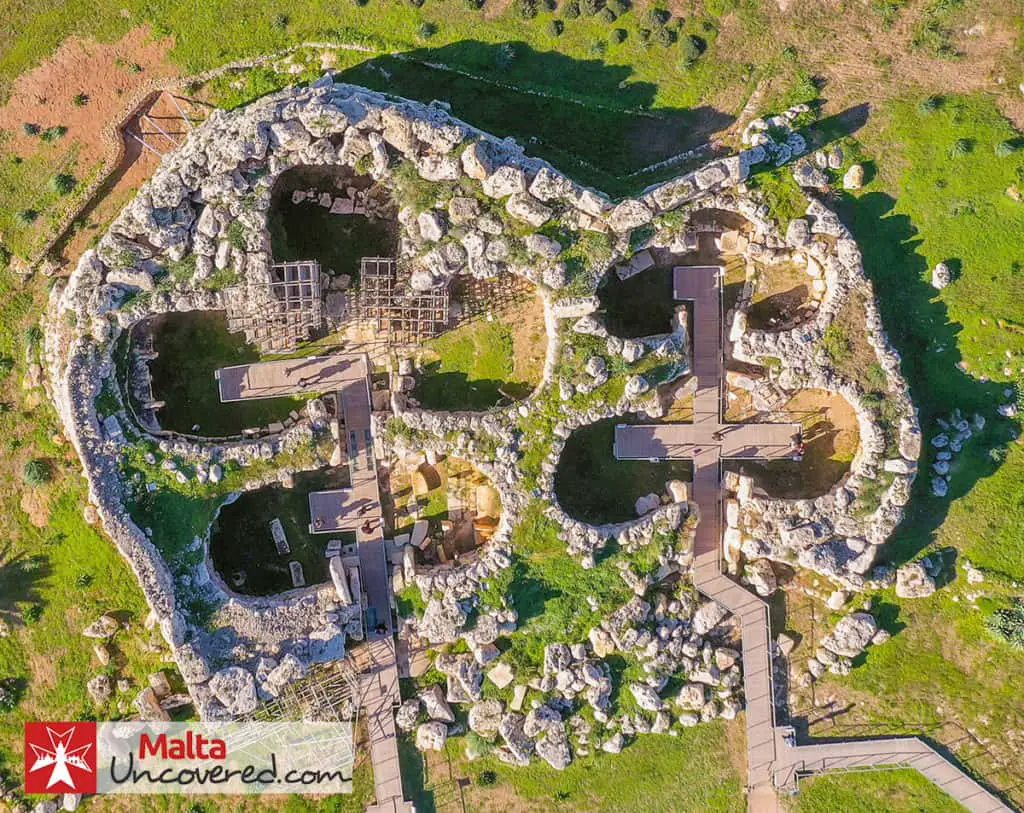
Seven of the several Megalithic temples that Malta is known for are recognised by UNESCO, and most are open to the public.
The most important temples were built between approximately 3600 BC and 2500 BC, and are impressive to visit. Although you could list them all on your sightseeing itinerary, my advice is as follows:
Another extremely impressive UNESCO World Heritage site to visit is the Hal Saflieni Hypogeum, an underground Neolithic complex in use between 4000 BC and 1500 BC.
Discovered accidentally in 1902, it’s a popular sightseeing destination for history buffs and curious culture-seekers. In fact, I recommend buying tickets in advance from Heritage Malta if you decide to visit the Hypogeum.
An island in the middle of the Mediterranean can’t go without a fishing hotspot, and Malta’s famous fishers’ village is Marsaxlokk, in the south of the island.
With picturesque, colourful luzzu (traditional Maltese fishing boats) all around the harbour and some of the island’s best seafood, you can have an amazing time in this tiny fishing village.
On Sunday mornings, there’s a famous fish market, selling anything from seafood and fresh produce to souvenirs and clothes.
Don’t miss out on the local cuisine, especially if you love fish, and wander around to spot the Marsaxlokk parish church.
Though Marsaxlokk is picturesque, it is also quite small, so the things to see and do are limited. That’s why I recommend taking this combo tour with the Blue Grotto, where you’ll be hitting the South’s highlights in one day.
The Blue Grotto and Marsaxlokk make for a great sightseeing combination, so make sure to see both!
Popeye Village is a must if you’re travelling with children, but the view is just as impressive even if you aren’t with the little ones.
The colourful village was built up against the cliffs in Mellieħa in 1980 as a set for the iconic Popeye film starring Robin Williams, so you might recognise it if you’re a bit of a movie buff.
If you’re on a budget or don’t feel like going inside Popeye Village, do go for a swim at the bottom of the cliffs at Anchor Bay.
This picturesque bay and its sparkling water lures down many tourists. It’s a great spot for snorkelling and diving, too, provided the wind direction is favourable.

If you love marine life or want to entertain the whole family, visit the Malta National Aquarium.
Discover the Mediterranean species that can be found all around the Maltese islands and plunge into Gozo and Comino’s waters.
But that’s not all – you’ll find history from the time of the Roman Empire, exotic species in the Tropical Oceans zone, and plenty of other interesting animals in the reptiles and amphibians area. Lots to see and learn!
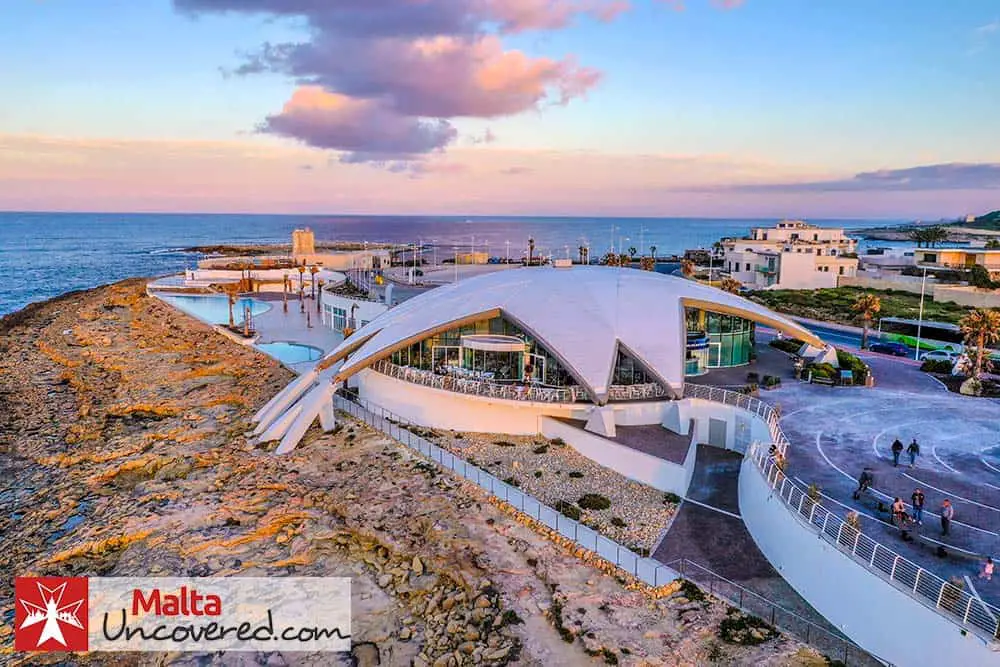
Malta’s underwater life is rich, as you’ll find caves, reefs, and wrecks dotted all around the islands.
Some of Europe’s most impressive dive sites are located in Malta, Gozo and Comino, and with plenty of Mediterranean wildlife, there is always something interesting to see.
Gozo’s Blue Hole is one of the most stunning dive sites around the island, as you descend into a natural swimming pool and find yourself between caves and rock formations.
A good reason to visit Malta is that it is also a great place to discover scuba diving, get your license, or even further develop your skills by doing one of the more advanced courses.
These are a few recommended dive sites to check out:
A massive tanker, 115 metres, sunk to a depth of 31-35 metres as an artificial reef in 1995. Today, it is considered one of Malta’s best wrecks, with lots of marine life and plenty to explore. You need to be an advanced diver for this dive site.
This East German minesweeper became a Maltese Patrol Boat in 1997 and sunk a decade later, after which it sits on a sandy bottom at 36 metres deep. Head to the north of Malta, Cirkewwa, to get a good look at the P29 and the Rozi wreck. You need to be an advanced diver for this dive site.
You can swim through the Santa Marija caves in Comino, where you’ll see stunning light reflections on the vertical walls and observe abundant marine life. This diving spot is for divers of all levels.
Near the famous Blue Hole in Gozo, you’ll find the Inland Sea Tunnel, which is also an amazing dive site. Swim through the 80-metre-long tunnel from the Inland Sea to the open water and admire the light show that the sun and water create.
Malta’s cliffs, reefs and wrecks are home to many different Mediterranean marine species.
The ones you’ll likely come across underwater in Malta include groupers, amberjack, various bream, octopi, squid, flying fish, gurnard, stingrays, meagre, bogue, red mullet, parrotfish and the occasional moray eel.
Though there aren’t many big fish around the islands, a lucky diver might see tuna, dolphins and bonitos – but don’t get your hopes up too much.
The best spots for snorkelling in Malta are those with crystal blue waters and plenty of rock formations and reefs for fish and little sea animals to hide in.
This remote beach is a gem in itself, as not many tourists find their way there, but the underwater life might be even more impressive.
The sea is clean and clear, and there are plenty of fish, water animals and rock formations to spot.
St. Peter’s Pool in the south of Malta is a popular natural pool where locals and tourists alike love to enjoy a long summer day. Besides cliff jumping, the area is ideal for snorkelling, as there are rocks, cliffs and beautiful fish species. You can get there either by car, on foot or by taking one of the boat tours from Marsaxlokk.
Comino’s Blue Lagoon is perhaps Malta’s most famous spot for swimming, sunbathing and snorkelling. Remember that you definitely won’t be the only one here, but many would say the crystal-clear waters are worth it.
Check out the caves, beaches and inlets around Comino too, where you’ll find more marine life and fewer people.

Although it’s just a tiny rock in the Mediterranean Sea, there are a few beautiful sandy beaches around Malta to admire.
You can either visit these beaches by public transport or with a rental car or get a completely different experience by enjoying these beaches at sea: This Beaches and Bays Cruise by Sea Adventure Excursions is highly recommended.
You’ll sail to the first two of the beaches below (depending on the weather/sea conditions) on a catamaran, combined with a stop at the Blue Lagoon.
Want to just visit the beaches the old-fashioned way? These are my top recommendations!

Golden Bay is Malta’s staple beach and definitely the place to go if you’re seeking a sunny day on a large, clean and comfortable beach.
Although it does get busy in summer, Golden Bay has access to all the amenities you might need – from toilets and kiosks to all the water sports you can imagine – and is easily accessible for anyone, whether you drive yourself or hop on a bus.
Especially on weekends, it’s also a popular beach for barbecues, and there’ll be a lively atmosphere.

Riviera Bay, also known as Għajn Tuffieħa, is my all-time favourite beach. It is situated right next to Golden Bay Beach, just a 10-minute walk away. It is lesser-known and therefore slightly less busy, but it’s also way smaller, making it quite crowded on summer days.
At this beautiful bay, you’ll find more surfers, stunning nature to explore and hike through, and one restaurant that offers basic meals.
Do keep in mind that you need to descend and ascend stairs to get there, so it’s not the most easily accessible.
St. Peter’s Pool isn’t a sandy beach but a beautiful natural pool near Marsaxlokk, in the south of Malta.
This natural swimming pool is popular for swimming and cliff jumping, but you can also do some amazing snorkelling here.
Head to the natural swimming pool from Marsaxlokk village and spend your day on the rocks while taking in the sun and the sea.
Maltese people know how to party, and it shouldn’t surprise you that they have plenty of local and national festa – feasts.
For each saint and event, there is a celebration, and towns typically have their own annual festa, too.
Check out this year’s festa calendar to see when and where there’s a festa around the time you’re visiting because it will definitely make your visit a unique one.
Perhaps Malta’s most impressive church (though the St John’s Co-Cathedral is hard to top) is the Mosta Dome, aka Rotunda. Built in 1860, this enormous rotunda is the third-largest unsupported dome in the world.
It survived a 200kg bomb falling through the dome without exploding during the Second World War, and today, it still proudly stands as one of Malta’s most impressive buildings.
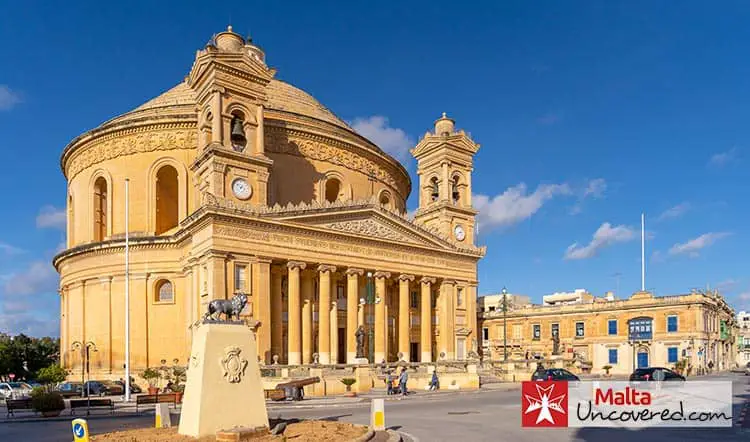
The St. Paul’s Catacombs, located on the outskirts of Mdina in the heart of Rabat, served as a burial ground during the Punic and Roman times.
The Roman-Byzantine catacombs complex consists of interconnected underground cemeteries, with more than 30 hypogea, used up to the 7th and 8th centuries AD. Definitely worth a visit if you’re a history buff!
Want to sample some of the local nightlife? There are a few key options to go for.
If you’re a party animal, you can’t head to Malta without visiting Paceville. The town is Malta’s party hub, with a concentration of restaurants, bars, pubs and clubs. Whatever you’re into, you’ll find it here. Brace yourself for cheap drinks and good times.
Available during the summer months only, you can hop on a large boat for a sunset trip from Sliema with a DJ, drinks, games and a lot of fun. These boat parties in Malta are a really unique experience and a great way to cool down, dance and have a few drinks while taking in the scenes, enjoying the vibes and taking a dip in the sea at one of the stops.

If you’re visiting Malta during the warmer months, you have to give open-air clubbing a go. The Gianpula complex on the outskirts of Rabat consists of 9 nightclubs, of which 7 are outdoor clubs, as well as rooftop lounges, pool clubs and festival arenas. With 200 parties per year, there is always something going on at Gianpula.
Alternatively, check out Uno, which is located on the edge of the Ta ‘Qali Crafts Village.
If you’d rather have a more laid-back night out, Valletta is perfect to spend your evenings. From good restaurants to classy wine bars and cosy pubs, you’ll find that there is always something going on. Check out the famous Bridge Bar for live jazz on Fridays and a drink on the ancient steps, or head to Trabuxu Wine Bar for a glass of local wine in a 400-year-old stone vaulted cellar.
For some of Malta’s most stunning views, you need to visit the Dingli Cliffs in the south of the island – it’s Malta’s highest point. Spend an afternoon hiking along the beautiful coast and explore Dingli village’s surroundings before settling down to enjoy the sun setting into the sea.
From there, you’ll also be able to spot the small, uninhabited islet of Filfla.
 Buskett Gardens
Buskett GardensBuskett, also known as the Buskett Gardens, is Malta’s only woodland area, located in a valley in Siġġiewi – just east of Dingli and close to Rabat and Mdina.
The forest was planted by the Knights of St. John as a hunting reserve and is now home to the Verdala Palace – an official residence of the President of Malta.
The San Anton Gardens are some of Malta’s loveliest gardens, with a large variety of gorgeous flowers and plants. Located in the central village of Attard, you’ll discover fountains, little ponds with ducks and turtles, and plenty of different flowers.
The garden and the San Anton Palace it belongs to were built by Grand Master Antoine de Paule, and the palace is currently the residence of the Maltese President.
Whether you are into street food, traditional food or wine, tasting the local food is one of the best things to do in Malta.
You can’t say you’ve been to Malta if you haven’t sampled some of the islands’ delicious street food.
The country’s national snack is known as pastizzi – a hearty puff pastry traditionally filled with peas or ricotta cheese. Nowadays, you’ll also find different variations, such as chicken and Nutella.

You’ll find pastizzi in almost every town and on every street corner, but the best pastizzi in the country can be found in is-Serkin in Rabat, near Mdina.
If you’re up for a bigger meal, a traditional Maltese dish is rabbit stew. Locally known as stuffat tal-fenek (rabbit stew) has been a staple of Malta since the Knights of St. John, so it is both a cultural and a historical staple. Not to be missed!
For lunch, grab a ftira with a can of Cisk (local beer) at a local kiosk. This isn’t just your average sandwich – it is made of mouthwatering Maltese bread, topped with tomato sauce, tuna, fresh tomatoes, onion, capers, goat cheese, and olives.
While Malta may not be the first destination that comes to mind when thinking of wine tasting, the archipelago has a perfect Mediterranean climate, and local wineries know exactly how to make great wine out of indigenous grapes.
Visit the Marsovin Winery or the Meridiana Wine Estate to get a taste of Malta’s very best wines, or order La Valette while eating out.
If you can’t get enough of it, this wine-tasting day trip combines a visit to the historic Three Cities with Senglea, Vittoriosa, and Cospicua in the morning and a professional afternoon wine-tasting.
If you need more inspiration, check out these carefully crafted itinerary guides:
Do you still have questions left? Let me know in the comments below, and I’ll get back to you ASAP!

Edward is the Founder and Editor of Malta Uncovered and author of two guidebooks on Malta and Valletta.
As a tourist-turned-expat with Maltese roots, he knows the islands inside out and helps thousands of visitors enjoy a memorable trip every year.
Was this article helpful? Share it with your friends!
Get the most out of your visit to Malta with Malta Uncovered guidebooks – full of local knowledge and up-to-date for 2024!

Just a small note regarding Golden Bay. One cannot use open fire (charcoal) BBQs on that beach; park rangers rightfully monitor the area, and you would risk a fine. Best that the article is updated. 🙂 Nonetheless well done for the article and ideas!
Thanks Chris, you’re right – updated it. Thanks for flagging! 🙂
Amazing blog! I won’t need to check any other travel blog/TripAdvisor – everything you need and more is nicely structured in this guide! Already booked my accommodation based on your tips.
One question – are the Jeep safari trips in Gozo nice and relaxed or would it be a little wild? I’m traveling with a toddler and I’m not much into wild driving either 😉
Thanks
Hi Andra, you’re welcome and happy to hear it’s been helpful to you! It’s been a while since I went on one of those safaris but if I recall correctly they’re not the smoothest of rides. To be safe I’d contact whatever company you’re looking to use in advance though.
Very, very helpful guide. Thank you!
Glad it’s proven to be useful to you, Geraldine!